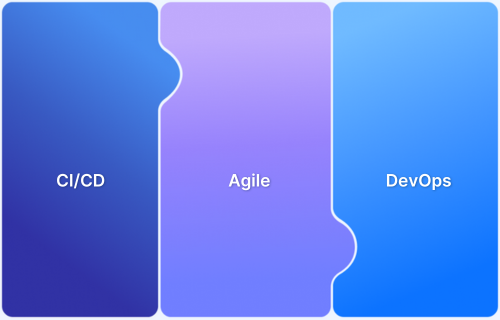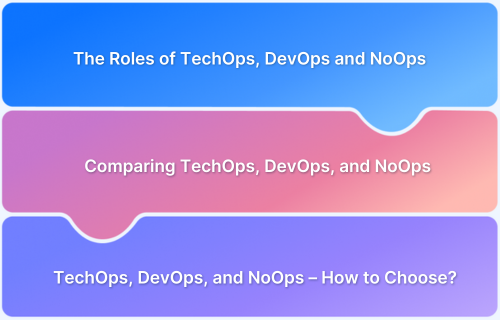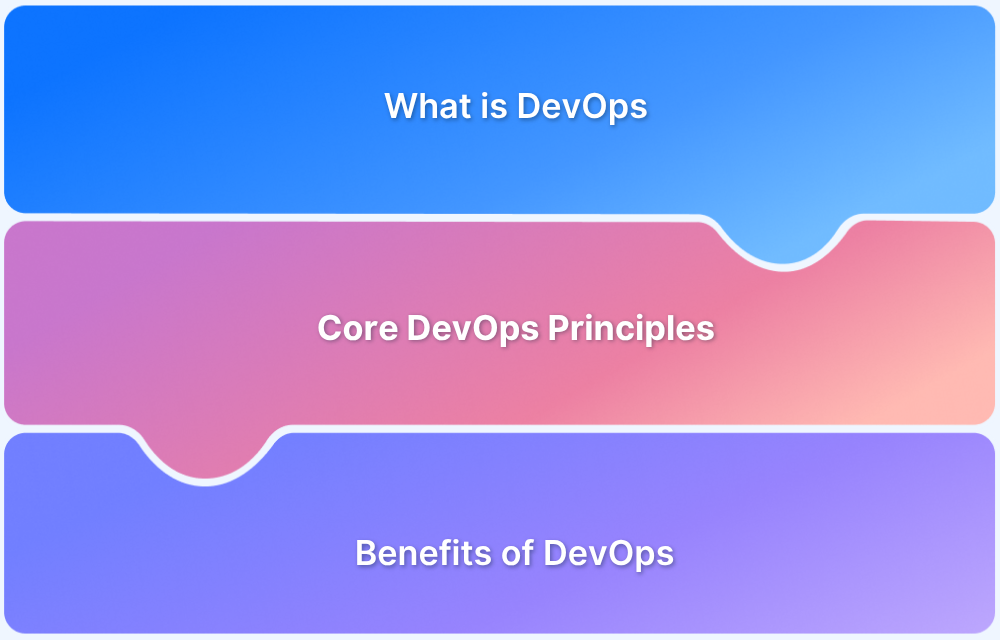Are disconnected DevOps tools and fragmented CI/CD pipelines slowing down your software delivery? While approximately 80% of organizations have adopted CI/CD practices, many still face the challenge of ensuring their diverse tools integrate seamlessly.
Mastering CI/CD is not just about running multiple pipelines; it’s about creating a cohesive workflow where version control, build automation, testing, deployment, and monitoring communicate effortlessly. This integration minimizes friction, provides real-time visibility, and significantly boosts the speed and reliability of software delivery.
This article delves deep into the role of CI/CD in DevOps, its importance, and how seamless tool integration can improve software quality and deployment speed.
What is CI/CD?
CI/CD refers to the combined practices of Continuous Integration (CI) and Continuous Delivery (CD), which aim to automate the software development lifecycle to deliver quality software quickly.
- Continuous Integration (CI): In CI, developers frequently commit code to a shared repository. Automated builds and tests are triggered on every commit to identify integration issues early and ensure that new code integrates well with the existing codebase.
- Continuous Delivery (CD): CD builds on CI by automating the deployment process. Once the code passes the tests, it is automatically pushed to staging or production environments for further validation or release.
Together, CI/CD promotes faster development cycles, improved software quality, and a smoother collaboration between development and operations teams.
Read More: Why is DevOps Important?
Importance of CI/CD in DevOps
CI/CD practices are the backbone of DevOps, as they enable the automation of processes that traditionally relied on manual intervention. The importance of CI/CD in DevOps includes:
- Faster Delivery: CI/CD allows teams to push frequent, smaller updates, speeding up the development and delivery cycle.
- Improved Quality: By running automated tests on each integration, CI/CD helps catch bugs early and ensures code quality.
- Increased Collaboration: CI/CD fosters collaboration between development and operations, aligning teams around a shared goal of efficient software delivery.
- Reliability: Automated testing and deployment minimize human error, leading to more reliable releases.
By integrating CI/CD into the DevOps pipeline, teams can achieve the agility and scalability needed to meet the demands of modern software development.
The Role of Automation in DevOps Pipelines
Automation is a critical element in DevOps and CI/CD, reducing the need for manual intervention in tasks such as testing, deployment, and monitoring. Here’s how automation plays a role:
- Automated Testing: With CI/CD, automated tests can be executed on every code change, reducing the feedback loop and ensuring that new features or bug fixes don’t break existing functionality.
- Automated Builds and Deployments: Automation in the build and deployment process ensures that software is consistently built and deployed in the same way every time, improving the reliability and speed of deployments.
- Efficient Error Handling: Automation can help automatically rollback deployments in case of failures, reducing downtime and preventing critical errors from affecting production environments.
Overall, automation within CI/CD pipelines enables faster, more efficient, and error-free software development and deployment.
Key Components of a CI/CD Pipeline
A robust CI/CD pipeline includes several key components that together facilitate continuous integration and delivery:
- Version Control: A system like Git or Subversion (SVN) where code is stored and managed.
- Build Automation: Tools such as Jenkins, CircleCI, or GitLab CI automate the process of building code into executable software.
- Automated Testing: Running unit tests, integration tests, and other checks automatically on every code change.
- Deployment Automation: Tools that handle the automated deployment of code to different environments, such as Kubernetes or AWS CodePipeline.
- Monitoring and Logging: Monitoring tools such as Prometheus or Grafana that track the performance of applications in production.
These components work together to automate the software development lifecycle, ensuring fast, reliable, and consistent releases.
The Importance of Tool Integration in CI/CD
Tool integration within CI/CD pipelines is vital for ensuring smooth automation across various stages of the software development lifecycle. Different tools in version control, testing, deployment, and monitoring must work seamlessly together to avoid bottlenecks and inefficiencies.
- Unified Process: Integration ensures that each tool passes data to the next tool in the pipeline, ensuring continuity.
- Real-Time Feedback: Integrated tools provide real-time feedback to developers, helping them quickly identify and resolve issues.
- Efficiency: By automating manual tasks and integrating tools into the CI/CD pipeline, teams can save time and resources while focusing on higher-value activities.
Without proper tool integration, the CI/CD pipeline can quickly become disjointed, leading to errors, delays, and reduced productivity.
Benefits of Seamless Tool Integration
Seamless integration of tools in the CI/CD pipeline brings a host of benefits:
- Increased Productivity: Developers and operations teams spend less time managing and troubleshooting tools and more time focusing on high-priority tasks.
- Improved Code Quality: Tools that are integrated to run tests automatically, for instance, reduce the chance of bugs or issues slipping through the cracks.
- Faster Deployment: Automated testing and deployment tools working in harmony allow for faster and more frequent releases.
- Cost Efficiency: Reduces the need for manual intervention, thus reducing operational costs
Seamless tool integration ensures that the CI/CD pipeline operates efficiently, allowing for continuous software delivery with minimal delays and maximum reliability.
Definition and Importance of Continuous Testing
Continuous testing is the practice of executing automated tests as part of the CI/CD pipeline to ensure that new code changes don’t negatively impact the existing codebase. It’s an essential part of DevOps that helps maintain software quality while ensuring fast delivery.
- Faster Feedback Loop: Continuous testing ensures that developers get quick feedback on the code they write, allowing them to fix issues promptly.
- Proactive Bug Detection: By running tests on each integration, continuous testing helps detect bugs early in the development cycle, preventing costly last-minute fixes.
- Improved Reliability: Continuous testing improves the overall reliability of the software, as frequent testing ensures that no bugs are introduced into production.
Overview of Popular CI/CD Tools
Popular CI/CD tools offer various features that help automate and streamline the software development pipeline. Here’s a quick overview:
Jenkins
Jenkins is an open-source automation server that facilitates the automation of building, testing, and deploying software. It’s one of the most widely adopted tools for CI/CD because of its flexibility, plugin architecture, and large community support. Jenkins helps streamline the integration and deployment process with its strong integration capabilities and highly customizable pipeline setup.
Key Features of Jenkins:
- Extensive Plugin Ecosystem: Over 1,500 plugins that allow integration with almost any tool, making it adaptable to a variety of use cases.
- Pipeline as Code: Jenkins supports defining build pipelines using a domain-specific language (DSL) called Pipeline as Code for more granular control and versioning.
- Distributed Builds: Supports distributed builds across multiple nodes, allowing parallel testing and faster build times.
- Extensive Integration: Easily integrates with version control systems like Git, testing tools, and deployment platforms.
- Real-time Feedback: Provides immediate feedback on code commits and build results, helping teams identify issues quickly.
GitLab CI
GitLab CI is a continuous integration and delivery tool that is fully integrated with GitLab. It enables developers to automate the testing, building, and deployment of their applications directly from the GitLab interface, simplifying the entire DevOps process.
Key Features of GitLab CI:
- Unified Interface: All CI/CD processes are managed within the GitLab platform, including version control, testing, and deployment.
- Auto DevOps: GitLab CI offers Auto DevOps, which automatically configures a CI/CD pipeline for your project, reducing setup time.
- Container Support: GitLab CI provides native support for Docker, enabling smooth containerized application deployments.
- Built-in Security: GitLab CI integrates security testing tools like SAST (Static Application Security Testing) directly into the pipeline.
- Scalable Pipelines: Automatically scale CI/CD pipelines based on project requirements, ensuring efficient processing even for large-scale applications.
CircleCI
CircleCI is a cloud-based CI/CD tool that specializes in automating the software development pipeline, focusing on fast, scalable, and highly customizable workflows. It integrates well with GitHub and Bitbucket, providing an intuitive interface for teams to define their pipelines and automate testing and deployment.
Key Features of CircleCI:
- Cloud-Native Infrastructure: Fully managed cloud infrastructure that automatically scales to accommodate the needs of your project.
- Parallelism: Runs multiple jobs concurrently, reducing the total time for build and test cycles.
- Docker Integration: Native Docker support allows for running tests and building images within Docker containers, improving consistency across environments.
- Customizable Pipelines: CircleCI allows developers to define complex workflows with customized steps, parallelism, and dependencies.
- Third-Party Integrations: CircleCI supports integrations with popular tools like Slack, Jira, AWS, and Kubernetes, ensuring a streamlined workflow across different systems.
- Performance Insights: CircleCI offers detailed insights into pipeline performance, helping teams identify bottlenecks and optimize workflows.
These tools are integral for managing automation within CI/CD pipelines, each providing unique functionalities that help streamline development and deployment processes.
Challenges and Solutions in CI/CD Tool Integration
While integrating CI/CD tools offers immense benefits, it also presents several challenges. Addressing these challenges is crucial to achieving a seamless and effective toolchain.
Tool Compatibility:
- Challenge: Different tools may have varying requirements, leading to integration issues. For instance, version control systems, build tools, testing frameworks, and deployment tools may not always be compatible out of the box.
- Solution: Choose CI/CD tools that are designed for easy integration with a wide range of tools. Look for plugins or native integrations that facilitate smooth compatibility across the toolchain. For instance, Jenkins offers a wide array of plugins that allow integration with other testing and deployment tools.
Performance Overhead:
- Challenge: As the number of integrated tools increases, so does the overhead on system resources. Each tool adds additional steps to the pipeline, which could slow down performance.
- Solution: Optimize tool configuration by running only necessary tests and tasks. For instance, use parallel execution to run multiple tests at once, or limit resource-heavy tasks to off-peak hours.
Skill Gaps:
- Challenge: Teams may lack the expertise to integrate or manage complex CI/CD tools.
- Solution: Provide proper training and documentation for the team to ensure that everyone understands how the tools fit into the pipeline and how to effectively manage them.
By proactively addressing these challenges, teams can achieve seamless integration and optimize their CI/CD workflows.
Criteria for Selecting CI/CD Tools
When selecting CI/CD tools, teams should consider several criteria to ensure the tool fits their needs:
- Ease of Use: The tool should have an intuitive interface for seamless integration and use by both development and operations teams.
- Scalability: Ensure the tool can scale with the growing needs of your development pipeline.
- Integration Capabilities: The tool should integrate smoothly with your existing development, testing, and deployment tools.
- Cost: Consider the total cost of ownership, including any licensing, maintenance, and infrastructure costs.
Selecting the right CI/CD tool is crucial for creating a reliable and efficient pipeline.
Continuous Testing Platforms in CI/CD
Continuous testing platforms help ensure that code is continuously validated through automated tests in the CI/CD pipeline.
BrowserStack Automate is one such platform that integrates seamlessly into CI/CD workflows, allowing teams to run automated regression tests across real devices and browsers.
Key features of BrowserStack Automate:
- 3,500+ Real Devices & Browsers: Ensure your applications work on real devices and browsers, providing reliable test results.
- Parallel Test Execution: Run tests across multiple environments simultaneously, reducing feedback cycles.
- Seamless Integration: Integrates easily with CI/CD tools like Jenkins, GitLab CI, and CircleCI for continuous testing automation.
By leveraging BrowserStack Automate, teams can enhance their CI/CD pipelines by ensuring faster, more reliable automated testing across a wide range of environments.
How to Integrate Testing, Version Control, and Build Tools?
Integrating testing, version control, and build tools ensures a smooth, automated workflow across all stages of the CI/CD pipeline.
- Version Control (Git): Use Git repositories to store and manage code.
- Build Tools (Maven, Gradle): Automate the build process with tools like Maven or Gradle, which compile code and create deployable artifacts.
- Testing : Integrate automated testing tools, like BrowserStack into the pipeline to validate code before deployment.
These tools should be tightly integrated to ensure that code changes trigger automated tests, which in turn trigger automated builds and deployments.
Best Practices for CI/CD and DevOps Tool Integration
To successfully integrate CI/CD and DevOps tools, follow these best practices:
- Use Modular Tools: Choose tools that can easily integrate with each other and are designed for specific tasks.
- Automate Everything: Automate testing, builds, deployments, and monitoring to streamline the entire workflow.
- Regularly Monitor Pipelines: Continuously monitor the pipeline to detect bottlenecks or issues early.
- Keep Tools Updated: Regularly update tools to ensure compatibility and access to the latest features.
Automating Testing and Deployment Workflows
Automation is the backbone of any efficient CI/CD pipeline, ensuring that key steps in the development lifecycle, including testing and deployment, are carried out seamlessly and reliably. The objective of automating testing and deployment is to eliminate human error, reduce cycle times, and enhance the consistency of results.
Automating Testing:
- Unit Tests: Unit testing checks individual components of the application for expected behavior. Automated unit testing ensures that code changes don’t break existing functionality. Each time code is pushed to the repository, automated tests run to validate the correctness of individual modules.
- Integration Tests: Once individual modules are tested, integration tests verify the interaction between those modules. Automated integration testing in CI/CD pipelines ensures that new changes work well with the rest of the application.
- End-to-End Tests: These tests simulate real-world user scenarios to verify the application’s functionality from start to finish. Automating end-to-end testing reduces the risk of overlooking critical user paths and ensures that updates don’t break the user experience.
- Regression Tests: As new features are added, regression tests check if the application’s existing features continue to function properly. By automating regression testing, teams can quickly detect any unintended side effects of code changes.
Automating Deployment:
- Continuous Deployment (CD): Once the code passes automated tests, the next step is deployment. With automated deployment, the process of pushing changes to staging or production environments becomes seamless, eliminating manual steps that are prone to human error.
- Deployment Pipelines: A continuous deployment pipeline automates the entire deployment process, from building the code to deploying it on the server. Tools like Jenkins, CircleCI, or GitLab CI can be used to define deployment pipelines that automatically deploy code across different environments (e.g., development, staging, production).
- Rollback Mechanisms: Automation can include automatic rollback if a deployment fails. This ensures that if a new release causes issues, the system can revert to the previous stable version without downtime, improving the system’s reliability.
By automating both testing and deployment workflows, teams can achieve faster, more reliable releases with reduced human error and increased consistency.
Integrating Security Tools into CI/CD
Security must be an integral part of the CI/CD pipeline. In today’s development landscape, security breaches can have significant consequences, and vulnerabilities in code need to be identified and addressed as early as possible.
Embedding security testing within the CI/CD pipeline ensures continuous vulnerability detection and remediation, making security an ongoing priority throughout the development lifecycle.
Security as Code:
- Security tools should be integrated directly into the CI/CD pipeline to provide continuous testing for vulnerabilities. This practice is commonly known as “Security as Code” and ensures that security checks are automated and embedded in the same way as functional tests.
- Tools like Snyk and Veracode automatically scan dependencies, containers, and application code for known vulnerabilities, license violations, and security flaws during the build process.
OWASP ZAP (Zed Attack Proxy):
- OWASP ZAP is an open-source security testing tool that can be integrated with CI/CD pipelines to perform automated security testing. It helps identify common security vulnerabilities, such as SQL injections or cross-site scripting (XSS) attacks, and can be configured to run periodically or with every build.
Automated Threat Detection:
- Automated threat detection tools continuously monitor the pipeline for security risks as new code is developed. When vulnerabilities are identified, alerts are triggered, allowing developers to address issues before they make it to production.
Integrating these tools within the CI/CD pipeline minimizes the chances of security vulnerabilities slipping through the cracks and ensures that security is not treated as an afterthought but rather as an integral part of the software delivery process.
The Role of AI and Machine Learning in CI/CD Pipelines
AI and machine learning (ML) are transforming the way CI/CD pipelines operate by introducing predictive analytics and automation that enhances both efficiency and accuracy.
- Predictive Testing: AI can analyze past data and predict which areas of the application are most likely to fail. This enables teams to focus their testing efforts on high-risk areas, ensuring better test coverage and more efficient use of resources.
- Intelligent Test Optimization: Machine learning algorithms can optimize test suites by identifying redundant or unnecessary tests. By continuously learning from test results, these systems can automatically adjust test coverage to improve performance and reduce unnecessary steps.
- Automating Code Quality Assessment: AI can evaluate code quality by analyzing patterns, suggesting improvements, and even detecting potential security issues or bugs. Tools powered by AI can automatically suggest improvements for code quality and security, allowing teams to address issues early in the development process.
- Anomaly Detection: Machine learning can help identify anomalies in application performance, infrastructure, or security. By learning from historical data, these models can detect unusual patterns and alert teams about potential issues that may otherwise go unnoticed.
AI and ML in CI/CD pipelines add a layer of intelligence that makes automation smarter, faster, and more accurate, ultimately enhancing the development lifecycle.
Get Expert QA Guidance Today
Schedule a call with BrowserStack QA specialists to discuss your testing challenges, automation strategies, and tool integrations. Gain actionable insights tailored to your projects and ensure faster, more reliable software delivery.
Conclusion
Mastering CI/CD and DevOps tool integration is key to faster, more reliable software delivery. By integrating CI/CD tools like Jenkins, GitLab CI, or CircleCI with testing tools like BrowserStack Automate, teams can automate testing, deployment, and security, reducing errors and improving efficiency. Overcoming challenges like tool compatibility and leveraging new technologies ensures smoother, consistent releases, driving success in software development.







